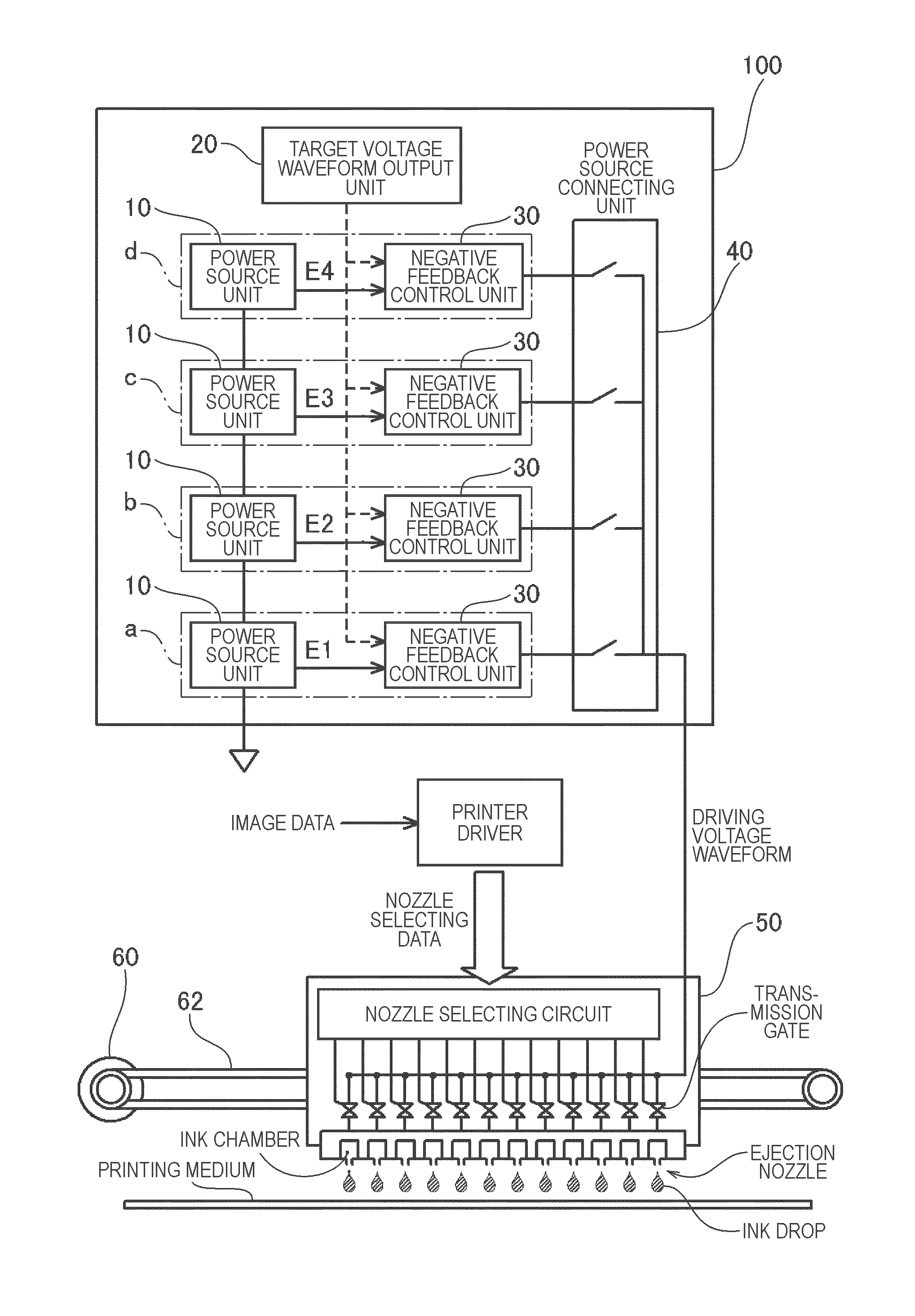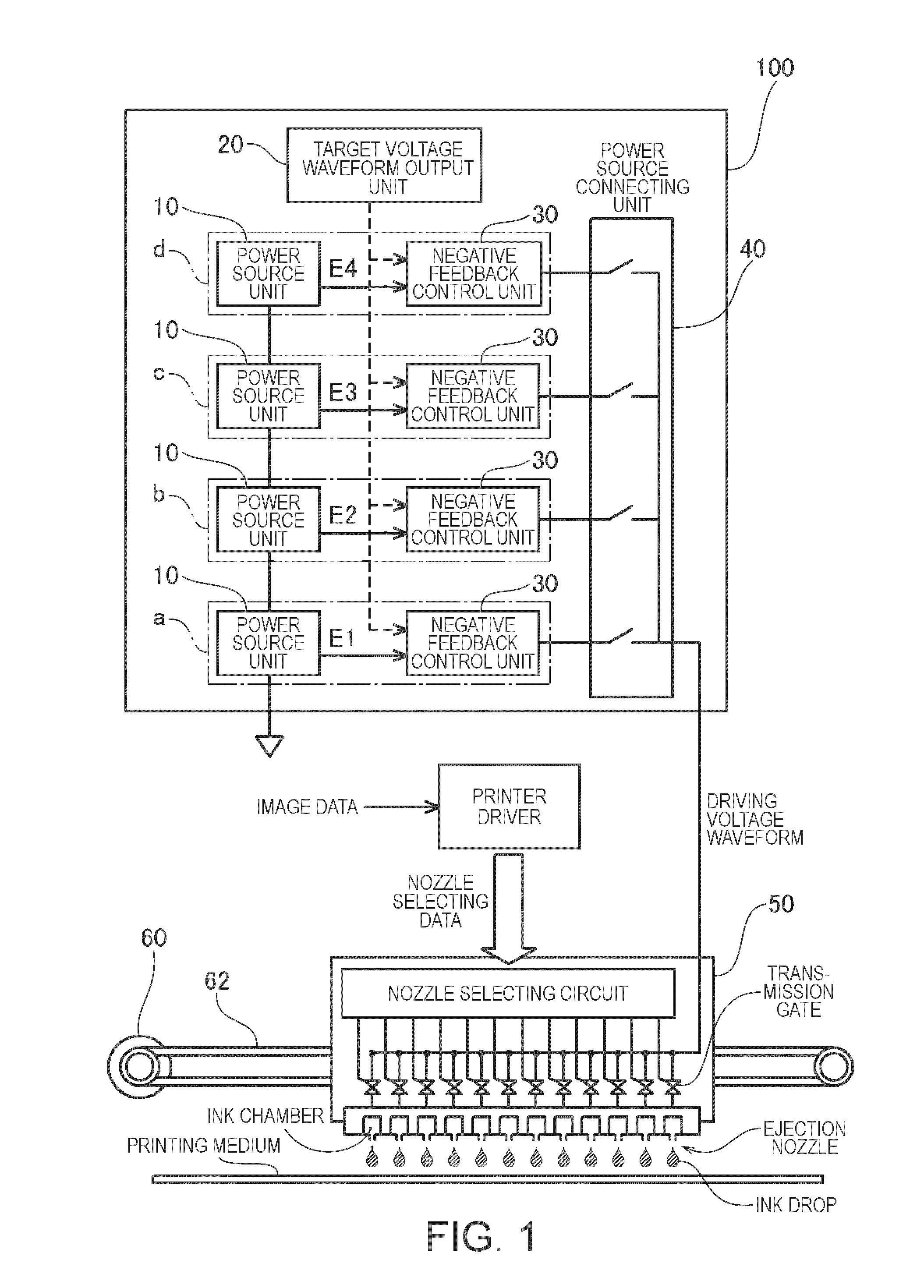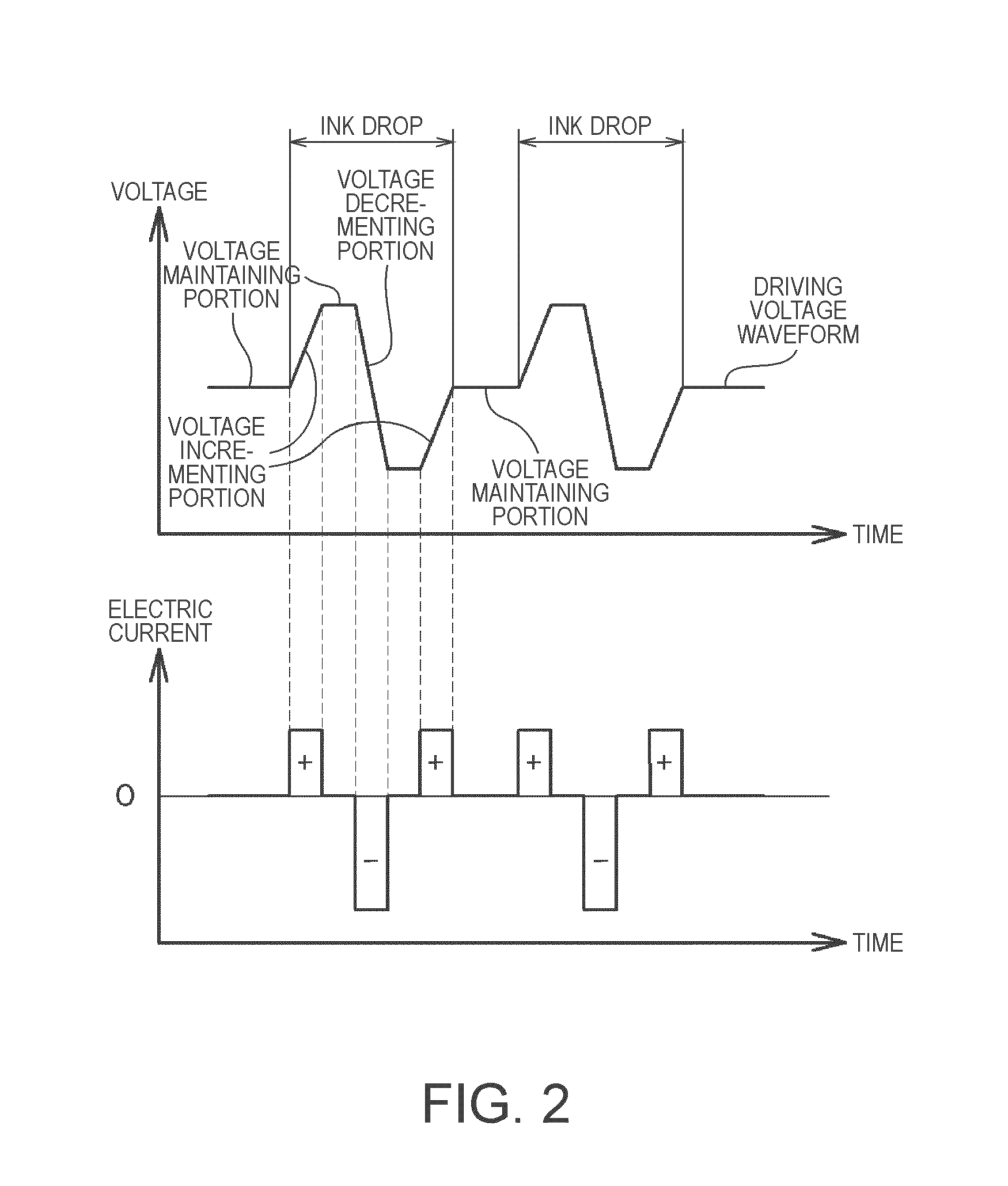Driving circuit for fluid jet head, driving method for fluid jet head, and fluid jet printing apparatus
a technology of driving circuit and fluid jet head, which is applied in the direction of printing, electrical equipment, ac network circuit arrangement, etc., can solve the problems of large circuit, large power loss, and further lowering of power efficiency, so as to reduce the effect of operating environment, stable supply of driving voltage waveform, and sufficient reserve capacity
- Summary
- Abstract
- Description
- Claims
- Application Information
AI Technical Summary
Benefits of technology
Problems solved by technology
Method used
Image
Examples
first embodiment
B. First Embodiment
Embodiment in which an Effect of an Operational Potential Difference Reduction
B-1. Configuration of Ejection Head Driving Circuit
[0080]FIG. 3 is an explanatory drawing illustrating the configuration of the ejection head driving circuit according to a first embodiment. In the illustrated example, four power sources E1 to E4 are provided, and the electric powers generated by the respective power sources E1 to E4 are connected to the ejection head 50 via unipolar-type NMOS transistors Ntr1 to Ntr4. The first embodiment is based on the assumption of the case in which the ejection head 50 is a resistive load, and the ejection head driving circuit 100 in the first embodiment reduces the power consumption using only the effect achieved by the reduction of the operational potential difference and does not use the effect achieved by the power recovery from the ejection head 50. In such a case, any types of the power sources may be used as the power sources E1 to E4 such as...
second embodiment
C. Second Embodiment
Embodiment in which an Effect of an Operational Potential Difference Reduction and an Electric Power Recovery
C-1: Configuration of Ejection Head Driving Circuit
[0108]FIG. 8 is an explanatory drawing illustrating the configuration of the ejection head driving circuit 100 according to the second embodiment. In the ejection head driving circuit 100 according to the second embodiment, the four power sources E1 to E4 are provided in the same manner as the ejection head driving circuit 100 according to the first embodiment shown in FIG. 3, and generate the electric powers having the voltage values E1, E2, E3, and E4, respectively. Also, the electric powers from the respective power sources E1 to E4 are connected to the ejection head 50 via the unipolar type NMOS transistors Ntr1 to Ntr4. In the second embodiment, since the electric power stored in the ejection head 50 needs to be recovered and reused, power sources which can store at least part of the electric power su...
first modified embodiment
D-1. First Modified Embodiment
[0131]In the second embodiment described above, the power sources E1 to E4 which generate voltages higher than the voltage value applied to the ejection head 50 are connected to the ejection head 50 while the driving voltage is increasing, and the power sources E1 to E4 which generate voltages lower than the voltage value applied to the ejection head 50 are connected to the ejection head 50 while the driving voltage is reducing. Therefore, as shown in FIG. 10B, only one of the respective switches of SN1 to SN4 and SP0 to Sp3 are turned ON. In contrast, it is also possible to drive the ejection head 50 while connecting a power source unit which generates a higher voltage value and a power source unit which generates a lower voltage value than that applied to the ejection head 50 simultaneously.
[0132]FIGS. 11A to FIG. 11C are explanatory drawings showing a state of driving the ejection head 50 in the ejection head driving circuit 100 according to a first ...
PUM
 Login to View More
Login to View More Abstract
Description
Claims
Application Information
 Login to View More
Login to View More - R&D
- Intellectual Property
- Life Sciences
- Materials
- Tech Scout
- Unparalleled Data Quality
- Higher Quality Content
- 60% Fewer Hallucinations
Browse by: Latest US Patents, China's latest patents, Technical Efficacy Thesaurus, Application Domain, Technology Topic, Popular Technical Reports.
© 2025 PatSnap. All rights reserved.Legal|Privacy policy|Modern Slavery Act Transparency Statement|Sitemap|About US| Contact US: help@patsnap.com



